Mother’s Day at the Autry
May 6, 2010
 Sunday is Mother’s Day, and if Mom’s as bored with flowers as you are, here’s something a little more off the beaten track: take her for a special Mother’s Day Brunch at the The Autry Museum of Western Heritage in Griffith Park.
Sunday is Mother’s Day, and if Mom’s as bored with flowers as you are, here’s something a little more off the beaten track: take her for a special Mother’s Day Brunch at the The Autry Museum of Western Heritage in Griffith Park.
After a buffet feast, stroll through the Autry’s current offering, “Home Land: How Women Made the West.” This unique exhibit explores the numerous contributions women made in keeping homes, raising families, building communities and playing a major but too often unheralded role in taming the modern West. And don’t forget to stop in the museum store afterward to pick up Mom’s free gift!
Cost is only $29 per adult, which includes food, museum admission and gift, and there’s a special low price for the kiddies. Full details can be found on the Autry website, or call (323) 667-2000. The buffet brunch runs from 10:00 a.m. to 2:00 p.m., with museum gallery tours at 1:00 p.m.
At LACMA, where danger lives
May 6, 2010
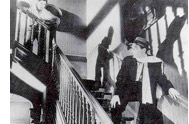 Think film noir, those dank and atmospheric 1940s crime thrillers that indelibly captured the mood of a worried and cynical postwar America, and you may be thinking Nicholas Musuraca. He’s the unsung cameraman who shot so many of those low-budget pictures for the old RKO Studios at a time when Hollywood’s dream factories specialized in conjuring up nightmares.
Think film noir, those dank and atmospheric 1940s crime thrillers that indelibly captured the mood of a worried and cynical postwar America, and you may be thinking Nicholas Musuraca. He’s the unsung cameraman who shot so many of those low-budget pictures for the old RKO Studios at a time when Hollywood’s dream factories specialized in conjuring up nightmares.
It was his lighting schemes and cinematography that so vividly captured an Expressionist underworld of harsh streetlights, rain-slicked streets and furtive figures in fedoras and trench-coats skulking through dark alleys.
Starting on Friday, May 14, the Los Angeles County Museum of Art begins Where Danger Lives: The Noir Cinematography of Nicholas Musuraca, a three-week tribute featuring some of Musuraca’s most memorable but rarely seen work. You’ll see “Stranger on the Third Floor,” considered by many to be the first genuine film noir; “Out of the Past,” starring Robert Mitchum and a young Kirk Douglas in a quintessential noir tale of a girl, a guy and a gangster trying desperately to escape the fate closing in on them; “Cat People,” an unsettling psychological thriller whose terrors lurk just outside the camera frame, and many more.
Ready to visit the dark side? First visit the LACMA website for tickets and directions. LACMA is located at 5905 Wilshire in the Miracle Mile, with easy parking in a nearby surface lot or LACMA’s new underground garage.
Posted 5-06-10
Spill, baby, spill
May 5, 2010
If you’re of a certain age, like me, you can still remember the horrifying scenes that unfolded for weeks along the Santa Barbara shoreline—the oil-drenched birds, the blackened sands, the hundreds of crews in rain slickers battling vainly against the advancing ooze.
Now, 40 years later, here we are again. Our nation’s coast is about to be assaulted once more by the failure of an offshore drilling rig, triggering the same kind of man-made mayhem that hit Santa Barbara in 1969 and that led to a series of landmark laws aimed at protecting our natural environment.
I know that four decades is a long time to hold something vividly in our memories. There is a natural tendency to forget, in the absence of catastrophe, the monumental consequences that can flow from a single mishap. This is why, in recent times, I believe there has been a softening among some policymakers of both parties towards off-shore drilling.
But the truth is that the public should expect more from those of us entrusted with protecting our eco-systems for future generations. The lessons of Santa Barbara—and those that now will be learned along the Gulf Coast—should require no remedial work. We need to ace these tests the first time or face the kind of unmitigated environmental and economic disaster that at this very moment is barreling down on the Gulf Coast states of Louisiana, Mississippi, Alabama and Florida.
 Simply put, we must stop any future consideration of off-shore drilling leases because no oil company can ever guarantee that an accident will not happen again, no matter how many rosy reports the industry churns out about the safety of such drilling.
Simply put, we must stop any future consideration of off-shore drilling leases because no oil company can ever guarantee that an accident will not happen again, no matter how many rosy reports the industry churns out about the safety of such drilling.
I applaud Gov. Arnold Schwarzenegger for recognizing that truth and reversing course yesterday in his plan for more drilling off the coast of Santa Barbara, which he had hoped would pump revenues into the state’s deficit-plagued budget. I also support President Obama’s move to halt any new off-shore leases until a complete investigation is completed of the explosion on BP’s deep-water platform in the Gulf. But I’d go a significant step further and put an end to additional off-shore drilling no matter what the circumstances surrounding the BP probe.
Our overriding public policy on this issue must be that the coastline is a resource worth protecting—one that, on balance, is of greater significance than the revenues of the oil industry or the relatively small amount of oil extracted from off-shore rigs. And I believe, from personal experience, that this is what the public wants.
Back in 1988, when I served on the Los Angeles City Council, the late-Councilman Marvin Braude and I authored a local ballot measure called Proposition O that banned drilling on land within a mile of the beach. The opposition spent huge sums in a misleading campaign to defeat our measure. Nonetheless, Prop. O passed and remains the law in the City of Los Angeles.
So now another test is upon us. Will we continue to cling to a belief that, with just a little more technological know-how, we’ll be able to safely perfect the science of ocean drilling? Or will we finally learn that now is the time to seriously move forward with the development of renewable energy sources that do not carry with them a certainty of environmental destruction?
This much I know for sure if we continue the status quo: “drill, baby, drill” inevitably will become “spill, baby, spill.”
Posted 4-4-10
Demolition time on Sunset
May 5, 2010
When the Sunset Boulevard bridge overpass to the 405 Freeway comes down, don’t expect a Vegas-style, imploding-the-Sands-Hotel kind of spectacle. This will be more of a chunk-by-chunk demolition—what one Metro official likens to taking apart a giant Lego structure.
But this is no child’s play.
The $1.034 billion I-405 Sepulveda Pass widening project enters a challenging new phase this week as workers prepare to demolish portions of the Sunset Bridge, one of three overpasses to be taken down and replaced with wider, upgraded structures in coming months. Up next are bridges at Skirball Center Drive (work slated to begin this fall) and Mulholland (scheduled to begin after the Skirball work starts.)
Although advance work on the Sunset bridge project starts Friday, the precise date for the demolition is up in the air, with the start likely to come this month, depending on how the prep work goes.
The bridge will have four lanes open to traffic during construction—two in each direction—but the prospect of the inevitable noise, dirt and traffic disruption has many in this tony neighborhood on edge. Adding to the concern is the beginning of work next week on a city Department of Water and Power water pipeline project that, for the next six months, will close a block-long stretch of Church Lane heading south from Sunset.
At the Luxe Hotel Sunset Boulevard, one of two upscale hotels located in the midst of the coming action, employees are used to staging enormous wedding and bar mitzvah receptions in the 300-guest ballroom and catering to the needs of high-profile guests reported to include celebrities such as Charlize Theron and Jennifer Love Hewitt.
But operating a hotel with two massive construction projects just outside the door?
“We are actually, honestly, scared,” says Seth Horowitz, who until recently was general manager of the Luxe, site of a community meeting earlier this week for members of local neighborhood associations seeking information on the projects. Metro representatives have met with officials of the Luxe and its nearby counterpart, Hotel Angeleno, and promised to stay in close communication to ensure that construction doesn’t interfere with upcoming big events at the hotels.
Even at the best of times, getting around the area can be tough. Horowitz said a guest at a “very important event” recently told him about battling rush hour traffic for 1-1/2 hours to reach the hotel from Paul Revere Middle School near Mandeville Canyon Road—less than three miles away. “That’s before they cut down the bridge,” Horowitz says.
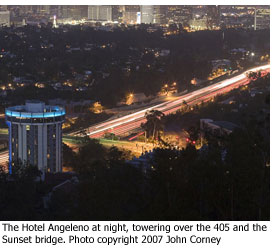 Eventually, that kind of surface street congestion should be helped by the freeway project, whose primary objective is to create a 10-mile northbound carpool lane on the 405 through the Sepulveda Pass—one of the most heavily-traveled corridors in the country. The rebuilt Sunset Bridge will be upgraded seismically and will be wider—120 feet, compared to 90 feet now—with 8 lanes instead of the current six and “higher capacity on- and off-ramps,” according to Metro.
Eventually, that kind of surface street congestion should be helped by the freeway project, whose primary objective is to create a 10-mile northbound carpool lane on the 405 through the Sepulveda Pass—one of the most heavily-traveled corridors in the country. The rebuilt Sunset Bridge will be upgraded seismically and will be wider—120 feet, compared to 90 feet now—with 8 lanes instead of the current six and “higher capacity on- and off-ramps,” according to Metro.
The new capacity could also help with concerns about freeway-bound cars backing up onto local streets. As for the long-running issue of freeway-ramp meter timing, a pilot program set to begin May 21 will examine whether turning the meters off during construction will improve traffic conditions.
Mike Barbour, Metro’s top executive on the project, acknowledges the area’s traffic congestion problems and the fact that residents will “kind of have to plan their lives around this work” for a while.” He says his agency is working to communicate alternative routes and detours, and to respond, whenever possible, to community suggestions for improving the situation. “If it becomes a complete mess out there,” he says, “obviously we’re going to correct that.”
More than anything, though, he says the goal is to get the contractor, Kiewit Pacific Co., to complete the work as quickly as possible. “Our big push is going to be to get it done sooner,” Barbour says.
In the meantime Metro has established a page dedicated to the Sunset Bridge demolition on its website and also is experimenting with an array of social media to get the word out. “I tweeted 14 times today, just because today there happened to be a lot of lane closures,” says Ned J. Racine, the project’s “new media officer.” In addition to Twitter and Facebook, the latest tool in Racine’s lineup is Nixle, an ad-free notification site used by law enforcement and other government agencies to communicate highly localized information to members of the public.
But cyber tools are not going to be enough to get the job done in the real world, even in this highly desirable corner of the real world, dotted as it is with such internationally known locales as the Getty, UCLA, Brentwood and Bel-Air. So for the demolition work, they’re bringing in a destruction tool called the “hoe ram”—a crane with a massive jackhammer attached. The contractor is “basically going to break the bridge apart with a huge jackhammer,” says Mark Van Gessel, Metro’s manager for the Sunset segment.
The work will take place in phases—between 6 and 9 nights of demolition followed by 10 months of construction on the southern end of the bridge, with a repeat of the same pattern on the northern side when the first half is finished. In all, some 12,000 tons of concrete will come down, to be pulverized onsite and recycled as “crushed miscellaneous base” and used as a building material on the project.
Segments of the freeway will be closed when demo work is taking place on the bridge overhead, as will streets including Sunset and Sepulveda. However, the work will be staggered so that the freeway and Sepulveda will not be closed at the same time.
Workers will start preparing for the job on Friday night, closing Sunset Boulevard and on-ramps near the Hotel Angeleno at 9 p.m. to establish new lane markings and a work zone to be completed by 6 a.m. Monday morning. Then they’ll start preparing the bridge for demolition: securing a major 34-inch water line inside the bridge; removing and bagging asbestos from around piping; and taking out the original wood forms so that the concrete can be recycled.
Cori Solomon, president of the Brentwood Glen Association, organized the meeting at the Luxe Hotel this week and invited her counterparts in the Westwood Hills Residents Association to take part as well. (Metro’s presentation is here, with slide 11 detailing Friday’s work.)
About 200 people showed up to voice concerns about noise, the double-whammy of the Church Lane water main work taking place at the same time the bridge job is underway, and the potential for construction to send new “cut through” traffic onto traditionally quiet residential streets.
Solomon, who’s lived in the neighborhood nearly 24 years, says her goal throughout the project is to “keep the community aware” and to find ways to make the situation “semi-livable” for residents.
“The board understands that it’s not going to be easy. It’s going to be a mess,” she says. “The thing is, it’s going to happen. You can’t stop it.”
And a philosophical attitude helps. “In the scheme of things, this freeway construction is a small speck in your life,” Solomon says. “In the end, it will hopefully be a little better, a little nicer.”
The project hotline number is (213) 922-3665. The next community meeting is scheduled for May 20, from 6-8 p.m. at The Getty. A fact sheet on the project, including a list of frequently asked questions, is here.
Posted 5-05-10
Rehab time for another Hollywood star
May 5, 2010
The Ford Amphitheatre, long in the shadow of its glamorous sibling, the Hollywood Bowl, is gearing up for its own big moment.
And like the under-appreciated secretary who finally whips off her glasses in Act III, the Ford has been keeping its charms under wraps for a good long time.
“We don’t want to be the Hollywood Bowl,” says Adam Davis, the Ford’s managing director, speaking with pride of the showcase that his more intimate venue provides for a diverse range of Los Angeles County performing artists.
But “people need to see it. People need to know it’s here.”
Boosting the Ford’s visibility—and fixing its long-running travails with “stacked” parking—are at the top of the agenda as the county owned-and-operated institution gets to work this week on its first ever master plan.
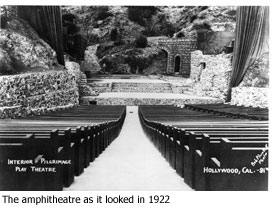 Also on the Ford’s wish list for the master plan: building new rehearsal and office space, along with a year-round restaurant; expanding or upgrading the 1,200-seat amphitheatre and its companion 87-seat theater, [Inside] the Ford; creating a sound barrier so that both venues can host performances simultaneously, and incorporating new environmentally-friendly technology throughout the site.
Also on the Ford’s wish list for the master plan: building new rehearsal and office space, along with a year-round restaurant; expanding or upgrading the 1,200-seat amphitheatre and its companion 87-seat theater, [Inside] the Ford; creating a sound barrier so that both venues can host performances simultaneously, and incorporating new environmentally-friendly technology throughout the site.
Levin & Associates Architects, which has worked on renovating and redefining a number of Los Angeles’ highest profile landmarks—including the Griffith Observatory and the Bradbury Building—has been selected to develop the master plan. The first big meeting on the project is scheduled for Thursday, with a goal of completing the plan by the end of the year. The planning is being funded by a $350,000 grant from the office of Supervisor Zev Yaroslavsky. The overall budget for rehabbing and rethinking the Ford will depend on what the master plan comes up with.
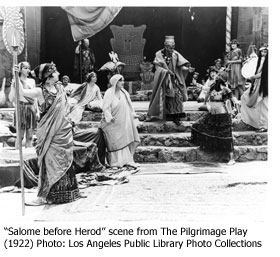 The master plan project is getting underway as the Ford turns 90 this year. Or to put that in Hollywood terms: it was time for a little work.
The master plan project is getting underway as the Ford turns 90 this year. Or to put that in Hollywood terms: it was time for a little work.
“It’s a pretty magical place when you walk into it,” Davis says. But he yearns for a “point of entrance, a point of arrival” for the Cahuenga Boulevard amphitheatre site, located just a short hop across the 101 Freeway from the internationally famous Bowl.
Davis is exaggerating—but only a little—when he says: “If I had a nickel for every person who told me ‘I never knew this place existed, and I’ve lived here all my life,’ I could have funded the master plan.”
An LED sign for the Ford was installed on Cahuenga last year.
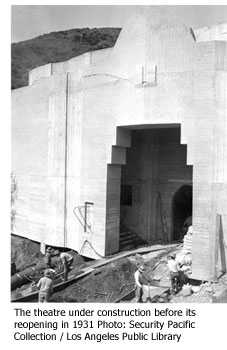 But “it’s still a hidden gem,” says Arts Commission Executive Director Laura Zucker who, with then-Supervisor Ed Edelman, helped build the modern-day Ford into a local arts institution in the early 1990s. “If you know, you know. If you don’t know, you can’t see it from the road.”
But “it’s still a hidden gem,” says Arts Commission Executive Director Laura Zucker who, with then-Supervisor Ed Edelman, helped build the modern-day Ford into a local arts institution in the early 1990s. “If you know, you know. If you don’t know, you can’t see it from the road.”
As it stands now, even people who can find the venue turn in and find themselves immediately facing “a parking lot and a blue motel,” Davis says. (The ‘60s-era one-time motel now provides office space for Davis and other members of the Ford staff, as well as for employees of the L.A. Philharmonic.)
The master plan aims to build on a series of improvements the county has undertaken at the Ford since 1999. Those improvements, totaling more than $6 million, include a $1.2 million electrical renovation; new signage and sound consoles; remodeling the box office, concession area and restrooms; and adding new picnic plazas, an ADA-compliant pathway and an elevator to make the steep terrain accessible to more people.
The master plan effort takes a longer, broader view of the facility. “It’s gotten to the point where we can’t piecemeal it anymore,” Davis says. “I’m so grateful that the county wants to invest in the place. It’s now important to plan not just for the next summer but for the next 30 years, 40 years.”
It was 90 years ago that the first theater on the Cahuenga Pass site was built by heiress and landowner Christine Wetherill Stevenson. Stevenson, who also led a group that acquired the property the Hollywood Bowl now sits on, created the venue as a setting for her “Pilgrimage Play”—a pageant she wrote about the life of Jesus. Stevenson’s production was “a highly attended event throughout the 1920s,” according to an art commission history of the locale, which notes that after the original theater burned down in a 1929 brush fire, the community rallied to rebuild it in its current form in 1931.
The land was deeded to the county in 1941, and the “Pilgrimage Play” was performed there until 1964, when factors that included a legal challenge to staging a religious show on county property shut down the production, according to another arts commission history of the site.
The setting is now a county regional park and the amphitheatre bears the name of the late County Supervisor John Anson Ford, an early proponent of fixing up the dilapidated facility. The launch of “Summer Nights at the Ford” in 1993 inaugurated the facility’s modern era as a venue for an eclectic mix of locally-based entertainment ranging from dance and music to theater and film. (This year’s summer schedule is here.)
“The theater’s been around since the 1920s, but we’ve only been programming it for 17 years,” Davis says. In that sense, he says, “we are a teenager.” And the master plan’s goal, in part, is to help the Ford answer the question, “What do we want to be when we grow up?”
Posted 5-05-10
Young probationers get lessons for life
May 5, 2010
When DeMarco Miller left L.A. County jail last fall at the age of 18 with a felony burglary conviction, his chances for rehabilitation didn’t look good.
The South L.A. youth was a member of the Crips. He faced three years’ probation for stealing a student’s cell phone. He hadn’t finished high school and he’d never held a job. Monthly meetings with his probation officer were cursory and unproductive.
But since January, Miller, now 19, has begun to turn his life around thanks to an innovative pilot program that provides high-risk young probationers with concentrated doses of skills training, behavior modification classes and job preparation.
On Friday, Miller will be one of 36 young adult probationers graduating from the Adult Day Reporting Center, housed in a one-time furniture factory on south San Pedro Street. So far, 79 young probationers have graduated from the program since its inception in late 2008.
The other day, Miller and some of his fellow probationers gathered for a graduation-preparation session, where they struggled with one small but telling symbol of the new direction of their lives—a necktie. “Where does this part go?” Miller asked sheepishly, holding up the broad end of a green tie, which was provided by probation officials, who are also lining up graduation suits.
The former gang member says that, only months ago, he would never have envisioned himself getting all dressed up with someplace truly important to go. Miller credits the program with giving him a sense of his potential.
“I’m glad I got sent here,” says Miller, who started in January and now hopes to be placed in a job in construction. “I didn’t like it at first, but then I’d go home with a happy attitude every day. I learned to be more mature. You’ve got to work before you can eat.”
The premise of the program is that young at-risk probationers can avoid future trouble¬—and hard time in prison—if they learn social and behavioral skills that life on the streets failed to teach them. Six probation officers lead classes in motivation, teaching social skills, moral reasoning and anger management. Incoming probationers are assessed for their educational, substance abuse and mental health needs. Students, who come three to five days a week, move at their own pace, taking six to nine months to finish the program.
“A lot of our clients are guys with state prison hanging over their heads,” says Edward Sykes, a supervising deputy probation officer who runs the center’s day-to-day operations. “If we can get these guys to change the way they think, they can begin to move away from gang membership and crime on their own.”
Probation officials say they’re not discouraged by the fact that the graduation rate remains low and that participation can be spotty. Of the 230 who have been enrolled, more than 25% never showed up for classes or left because of new arrests. Probation officials say they are so committed to the program that they’ll find additional funding when a $5 million state grant expires in August—even if they have to cut parts of the program.
“We’re committed to keeping it operational,” says Cal Remington, the department’s acting chief deputy probation officer. Come 2011, new state funding will arrive, with plans by the department to expand the pilot program.
Probationers are involuntarily assigned to the program by judges or probation officers after felony convictions for crimes ranging from assault and robbery to burglary and drug sales. Sex offenders and probationers convicted of gun-related crimes are barred. About half are gang members. Probation officers proudly note that the San Pedro Street center has been free from gang fighting.
The prospect of employment is the program’s biggest carrot. Graduates have been placed in building maintenance, hotel hospitality, food service, carpentry and other construction work. Some even have become ushers for Cirque de Soleil, says Erick Cerda, the program’s employment resource coordinator. On Fridays, visitors from various workplaces meet with groups of probations to share their job experiences.
Probation officers assigned to the Adult Day Reporting Center are given a lower caseload, meaning they can develop deeper relationships with their charges, many of whom, like Jesus Escobar, appreciate the extra support.
Escobar was a tagger convicted in 2008 of defacing Metro buses with his “SHOTS” signature. Before he was assigned to the program, he says, his first probation officer was too jammed to spend time. “It was ‘hi’ and ‘bye’,” Escobar, now 22, recalls.
But Escobar was determined to finish high school and enroll at the University of Southern California, which he knew mainly from riding bikes nearby as a kid. When he was assigned to the Day Reporting Center, he got the push he needed.
His new probation officer, Gabriel Perez, encouraged Escobar to take community college classes and apply to USC last year. A day before Escobar’s graduation from the probation program in May, 2009, he learned that he’d be a Trojan.
Escobar is now a sophomore, studying sociology and political science and aiming to become an attorney. He says he “still feels a little weird” on campus and is shy about reaching out because of his background. He suspects there aren’t many students like him who arrive at school every day on public transportation from Watts.
“None of this would have happened for me if it hadn’t been for this probation program,” Escobar says while strolling with a visitor on the USC campus. “They believed in me.”
Posted 5/5/10
Pushing for L.A. in D.C.
May 4, 2010
Every year, the Board of Supervisors travels to Washington D.C. for several days to press the county’s agenda with congressional and White House officials. This year, the stakes are particularly high because of the dire budget realities of local and state governments.
At the top of the Supervisors’ list will be requests for: financial help in preparing for implementation of health care reform; a continuing federal partnership for a program that provides temporary support for needy families, and full federal reimbursement for state and local costs associated with the incarceration of undocumented criminal aliens.
For the board’s schedule of meetings and details on the issues it will be pursuing in Washington, click here.
Posted 5/4/10
Hope on the streets of Hollywood
May 3, 2010
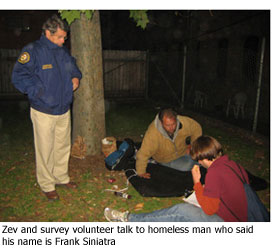 My alarm went off at 3:00 a.m., rousing me from bed for a trip to Hollywood to participate in a new count of homeless people—one in a series of such surveys conducted in Skid Row and throughout my supervisorial district during the past 2 ½ years.
My alarm went off at 3:00 a.m., rousing me from bed for a trip to Hollywood to participate in a new count of homeless people—one in a series of such surveys conducted in Skid Row and throughout my supervisorial district during the past 2 ½ years.
The purpose of this count, like the others, was to identify as many homeless people as possible and determine who among them is most likely to die on the streets unless they’re given the services and housing they desperately need. Each individual is asked a series of scripted questions about their health, mental health, substance abuse, economics or any combination of the above.
At the end of this week’s three-day Hollywood survey—conducted under the guidance of Common Ground, a New York-based non-profit that pioneered this technique—a list will be turned over to the county and its service providers. We then will begin the delicate and difficult process of convincing these vulnerable individuals to accept our offer of housing and services.
The team I joined on Monday covered an area bounded by La Brea, Highland, Franklin and Sunset. Our team leader was a highly motivated and passionate intern from People Assisting the Homeless (PATH) by the name of Alex Cornell, who is pursuing a divinity degree. We were told we needed to complete our survey before sunrise, in the hours before the homeless would begin to scatter for the day.
In the pre-dawn chill, in the shadow of boutique hotels and gentrified storefronts, we found people asleep on church steps, in parks and on bus benches. Alex gently approached each of our prospective clients and asked if they’d cooperate in answering the questionnaire. As an inducement, they were offered a $5 coupon from Subway sandwiches. While most agreed to participate, some wanted only to be left alone, despite our offer of food.
I have to confess that I had not planned to spend the whole 2 ½ hours on the streets of Hollywood in the middle of the night interviewing the homeless. But once I got started, I couldn’t stop. With each person we interviewed, I felt a sense of responsibility to them and an even greater sense of the possibilities we could offer to help avert a tragic end to their lives.
The first man we found was sleeping in a pocket park off of Franklin Avenue. He’d been homeless for 8 years, most of them in Hollywood and most of them in that park. He said he’d suffered a traumatic brain injury in an accident some years ago and had no memory of anything. His name, he said, was Frank Sinatra. I suspect he’ll end up on Common Ground’s “vulnerability index” as one of the homeless who’ll rank among the area’s most likely to die on the streets without services and housing.
As we walked down La Brea Ave. between Hollywood and Sunset, we found a man in his late 50’s sleeping on a cot in the front yard of an apartment building. He offered a different face of the problem of homelessness on our streets.
Homeless for two months, he said he has a B.A. from UCLA and was honorably discharged from the United States Navy. I asked what precipitated his life of homelessness in Hollywood. He said that he’d been living with his mother in Altadena when her failing health forced her to move into a convalescent hospital. To pay the costs, she needed to sell her house, leaving her son without a roof.
One of our other teams found a colony of homeless people living in the hills above the Hollywood Bowl—more than 20 of them led by their “mayor,” an armed forces veteran who has been homeless for more than two decades. One of the tragedies of homelessness in our country is that somewhere between 20% and 25% of the homeless are veterans of our armed forces. They answered the call of our nation, and now it’s time for us to answer their call for help.
That’s what the Hollywood homeless count is all about. We’ve already had success with this approach in Skid Row, in Venice, in Santa Monica and in other communities, where “permanent supportive housing” will be provided in the months ahead to nearly 500 of the most chronically and vulnerable homeless on our streets.
These are the individuals who’ll end up in our jails and emergency rooms multiple times during the course of a year if they’re not housed and provided with crucial health and mental health services. On the streets, they run up a fortune in health and incarceration costs. Providing them with permanent supportive housing will actually save our county and society money because these individuals will no longer end up in jail or in emergency rooms with anything approaching the same frequency.
I know that the magnitude of our homeless problem can seem intimidating and insurmountable. But this is a problem of individual lives, not statistics. Common Ground’s “vulnerability index” gives us a biography of sorts for each of these people, giving us new and deeper insights into their struggles and exactly what they need to have lives restored. Our job is to take those biographies—those life stories—and change their trajectories.
To see a video of Zev addressing homeless volunteers before heading onto the streets, click here.
Posted 4-29-10
Read related story
Meet Kerry Morrison, who represents Hollywood business and organized the homeless count.
Census to Malibu: You’re No. 2!
May 3, 2010
Malibu, you’re off the hook—sort of. You’re only the worst census responder on mainland L.A. County.
Embarrassed county officials on Monday said another beachfront town actually had a worse record in returning its U.S. Census Bureau questionnaires—the tiny City of Avalon on Catalina Island. There, the response rate was a mere 43%, compared to Malibu’s runner-up figure of 57%.
The county’s Chief Executive Office said it mistakenly singled out Malibu after reviewing an interactive map on the bureau’s website, which provides census participation rates when visitors mouse-over individual cities. The problem, according to CEO Manager Frank Cheng, was that he did not expand the map’s view to include Catalina.
“The City of Avalon just wasn’t in sight,” Cheng said.
Still, he suggested that Malibu ought not to be holding any parades just yet, considering it fell far below L.A. County’s average census participation rate of 70%.
Malibu should keep encouraging residents to participate in the census, Cheng said, “even though we now realize the city is not officially ranked at the very bottom in L.A. County.”
Cheng will get no argument from Malibu Mayor Jefferson “Zuma Jay” Wagner, who said he finds little comfort or vindication in the CEO’s mistaken map quest. “We’re not the worst, but we’re second worst,” Wagner said. “I’d rather be second or third from the top, especially in light of all the educated people who live in Malibu.”
Last week, in a story on Supervisor Zev Yaroslavsky’s website, Jefferson said his city’s poor census showing was partly the result of vacation homes, whose owners are not required to return forms. But he also chided some of Malibu’s wealthier residents for not sufficiently caring about the importance of the census in determining how $400 billion in federal funds is distributed among communities throughout the nation. He said these folks have a case of “IGM—I Got Mine.”
Malibu and Avalon, despite their shared views of the Pacific, are demographically unique, illustrating the challenges census officials have faced in getting the region’s diverse communities on board with the count. According to the 2000 census, for example, the median income in Malibu was $102,000. In Avalon, it was $39,300, with 10% of the population falling below the poverty line. Avalon also has a large Latino population, the labor force for Catalina’s many hotels and restaurants. “We’re a 100% visitor-based economy,” said Avalon Mayor Bob Kennedy.
Census officials, concerned from the beginning that this group might be too fearful to mail back the 10-question forms, conducted an extensive outreach campaign in Avalon, assuring the Latino population that census information would not be shared with other government agencies.
Kennedy said that although he cannot be certain, he suspects that some Latino residents may still have been too afraid to return the forms. Kennedy said that the city’s poor response rate might also have been a reflection of the large number of rental units and second homes on the island.
The census has now moved to its next stage, with census workers starting to knock on the doors of homes for which no questionnaires were returned. “We’re hopeful,” Kennedy said, “that now we’ll get a true representation of our population.”
Read earlier story on Malibu and the census here.
Posted 5/3/10





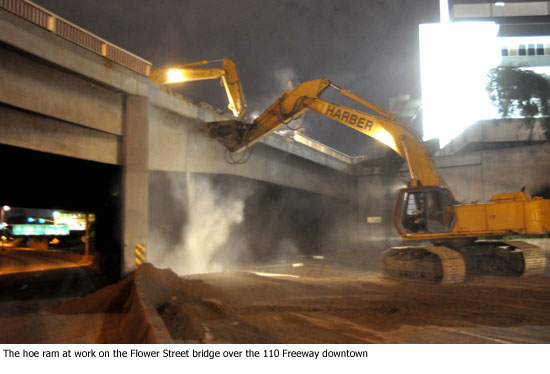
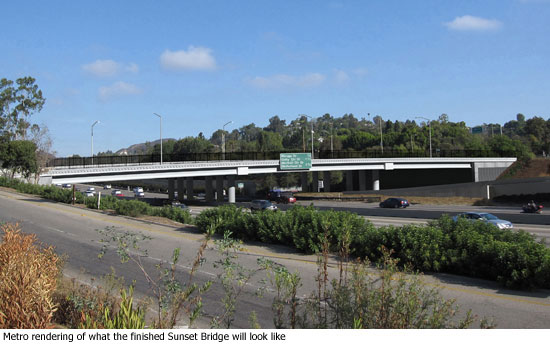

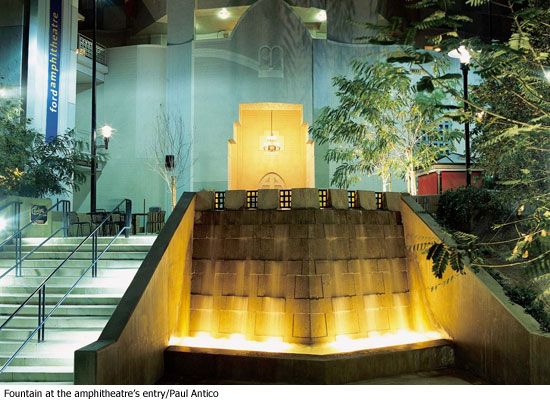

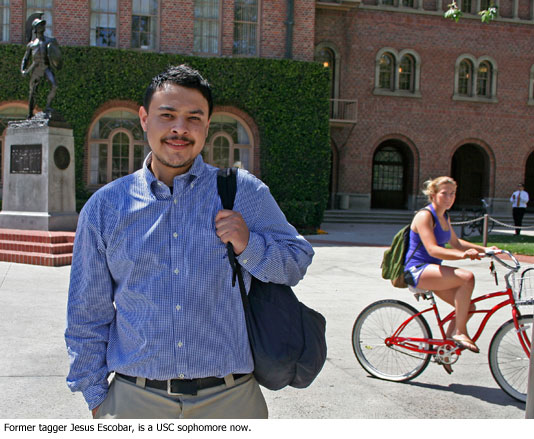
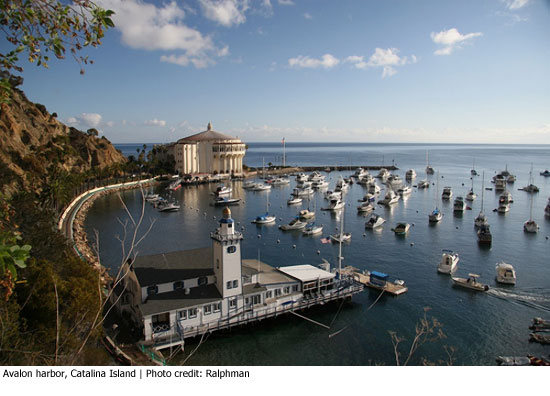





 Check for the latest closure information
Check for the latest closure information








